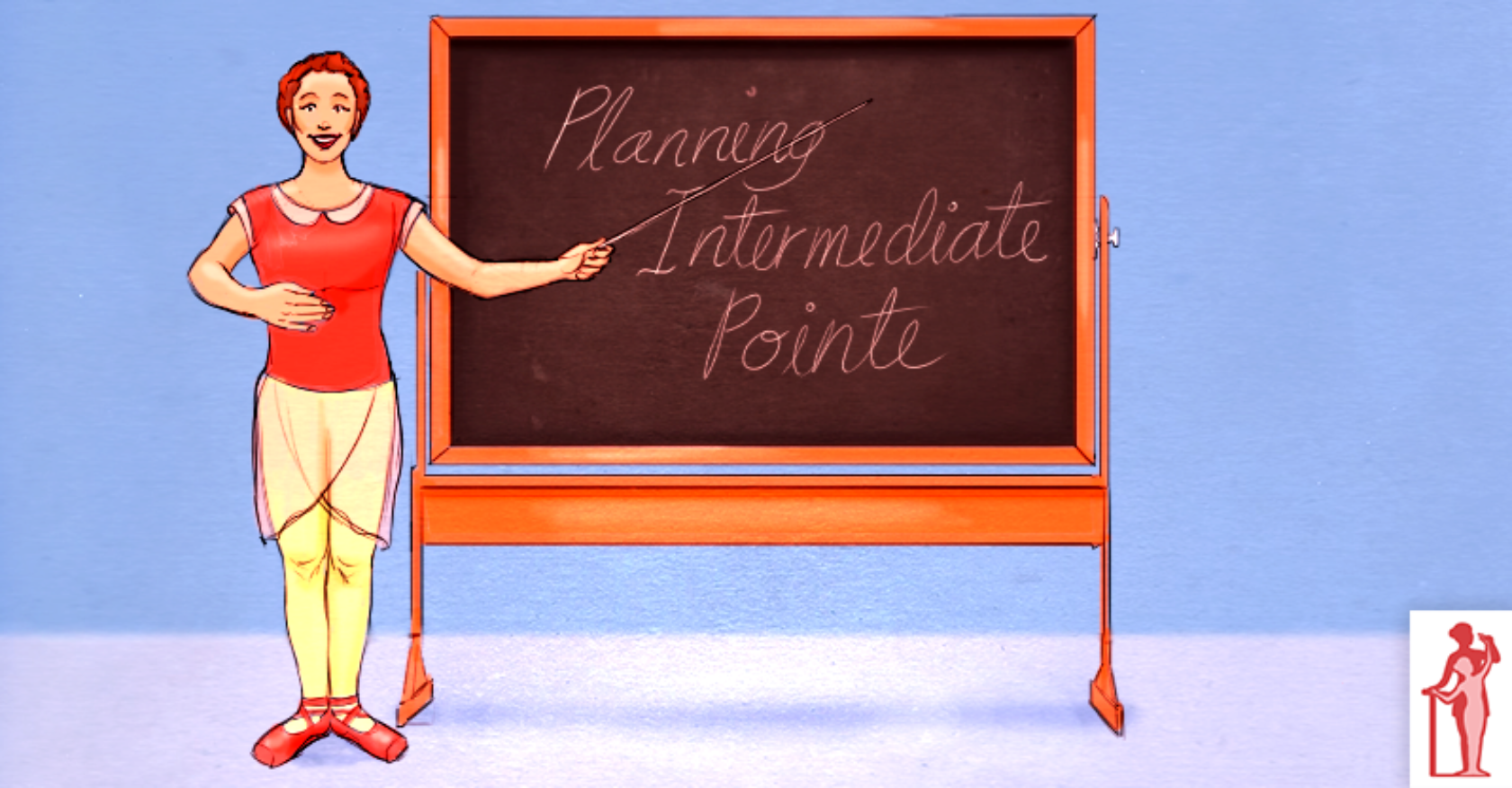The first two years of pointe work should be very carefully limited and controlled. Too much too soon has proven to be detrimental in pointe class. As with any class, there is a simple formula teachers can use to plan out the skills and new techniques they would like their students to master in the year. As they are becoming more comfortable in their pointe shoes, they are ready to explore more complex pointe work. Here’s a great way to break it down into weekly lessons.
Creating Weekly Lessons
I. Start with a list of steps and technical progress that you want your Intermediate Pointe class to accomplish during the year. It may help to review what your students have already learned in their first two years of pointe (see the Pointe 1 Book).
II. Now divide this list into months, such as Sept, Oct, Nov, Dec, Jan, Feb, Mar, Apr, May. Depending on your yearly program of instruction, the last two months may need to be devoted to a simple warm up at the barre, and then recital preparation. New work would be kept at a minimum at this point in the year, and artistry and staging emphasized along with the choreography for performance.
III. Next, divide each month’s teaching items into four lessons (weeks).
Be Ready to Make Adjustments
Most of us dance teachers would end up with far more material on our list than the students could comfortably learn and retain in the time provided. That’s OK. Each month, you will need to look at your list and choose the two most important items for the first week of lessons. (Hopefully, at this level, they are coming two to four times a week).
When these items are learned, then choose two more ideas to teach. Work at the speed your class can handle and remember, rather than at the speed you would like them to go! Always review and use new learnings for about three months.
As you go through the year, make adjustments to your list to bring it in line with what the students are able to accomplish.
Ideas for Class Structure
Consider using a memorized barre, changing some of the exercises about every two months. This gives the students a chance to concentrate more on the details of technique and artistry. It eliminates the choreographic teaching time between exercises, as simple reminders are all that is needed once the routine of the barre is learned. Or, this can give you, the teacher, a bit more time for teaching technical and artistic improvements. (Also, see “Choosing Class Format for Beginning Pointe”.)
Zeroing in on one main idea to improve at each lesson, rather than trying to correct everything, will result in more concentrated learning and longer retention. In this way, the improvement for that class is applied to each exercise and each center enchainement. This teaches the students to apply technical and artistic principles to all of the ballet movements, not just one or two.
It takes about twelve weeks for each new learning to become a somewhat permanent habit. It also takes that long for mistakes to become habits. (See “The Twelve Week Rule”.) That means you don’t have to correct every mistake in every class. Choose a few, and work on those, ignoring others, for long term results.
Sometimes, just for fun, you might try asking one of the students to create an exercise or enchainement for the class to try at the next lesson.
Also, very important, each class should contain something for fun, something they like doing, and are not corrected on. Put this near the end of the class so they go home happy!
Taking the time to plan out the goals and achievements you would like your students to attain this year will not only make class time more fun, it will also ensure a well-rounded, more complete study of the art of pointe work.
Related Articles


Comments
No comments for this post.
Add Comment